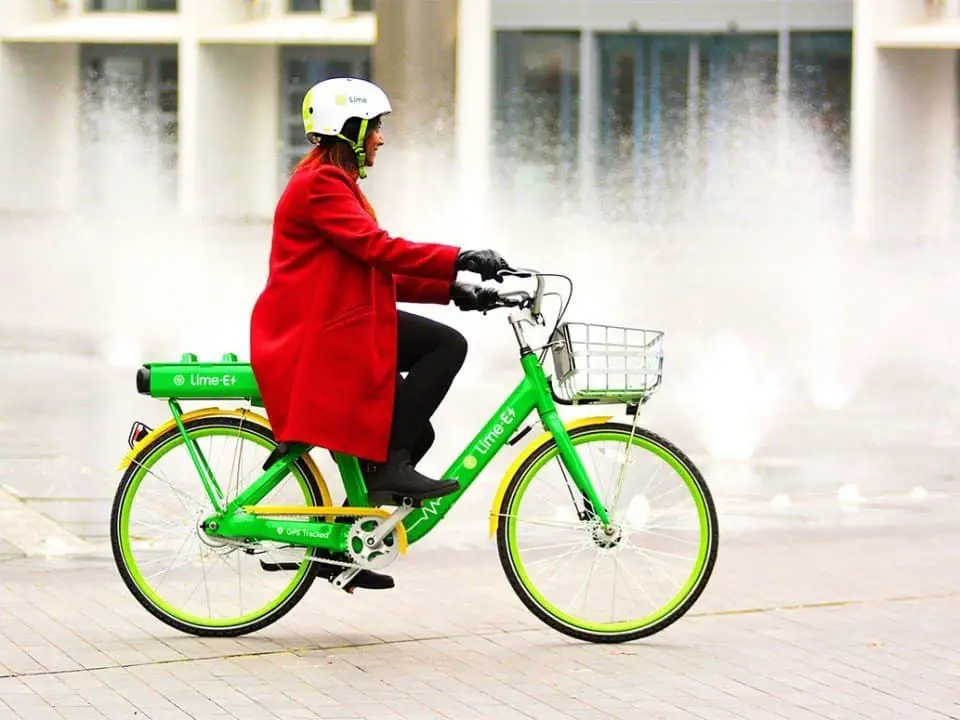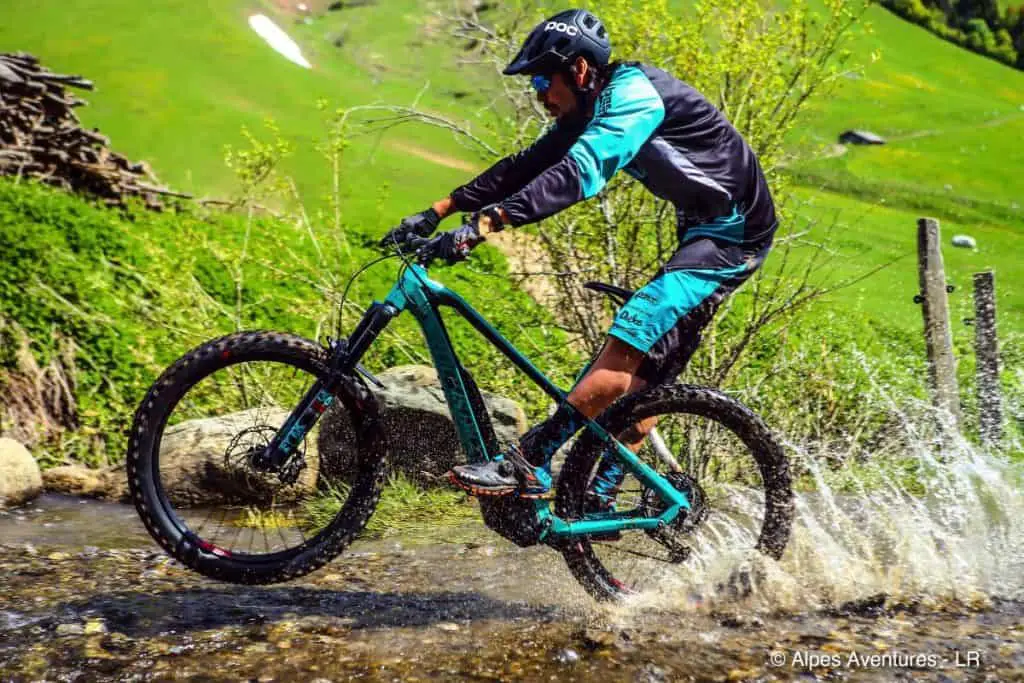Last Updated on September 29, 2023 by Igor Karni

As e-bikes, or electric bikes, become more and more popular, there’s still a learning curve with knowing how to handle e-bikes in inclement weather conditions. The onboard power system that helps give e-bikes their kick also makes them susceptible in ways that traditional bikes are not.
Having the proper knowledge in these types of situations as a bike owner is vital to ensure that you do what’s best for your bike. Keep reading for the tops to handle your e-bike in wet conditions.
So, what’s the best mechanism for keeping your e-bike working in wet conditions? E-bikes are water-resistant, but not waterproof. Treat your e-bike under the rain, as you would treat your other electronics under the rain – your smartphone, for example. Short term, your e-bike can get wet and be in the rain, but any long-term exposure can cause serious problems.
It’s important to note that no e-bike is entirely waterproof (even if they claim to be). Just like any other electronics, a smartphone, for instance, might be “water-resistant” but it is not waterproof.
E-bike’s electronics getting wet
Electronics are now part of our daily lives and that includes when less than ideal weather strikes. Most individuals don’t think twice about using their phones or other electronics while walking in the rain or using the bathroom – both situations that surround them with water. And that risk of water doesn’t deter them. They still utilize their phone’s GPS while walking in the rain. They walk with headphones in when it’s raining so they can listen to music or podcasts.
Perhaps they call people they need to talk to while it’s pouring, or they play music while they’re in the shower. Either way, the water doesn’t discourage them because they know that electronics are largely water-resistant.
Read also: Cowboy 3 vs Vanmoof S3 review, top connected city e-bikes. And, Angell vs Cowboy vs Vanmoof, which one would you choose?
As long as your phone screen isn’t broken, or you don’t entirely submerge your phone into water (like a full sink or toilet), then the risk of your phone breaking in the rain or with a few drops of water from the shower is relatively low. It’s worth being cautious of but it’s never a game-changer. Electronics today are not waterproof, but they are water-resistant.
What’s the difference between waterproof and water-resistant where electronics are concerned? Think about it this way. A waterproof item means that no water gets in and no water gets out. The surface of the device, in this case, would be highly impervious to water. Water resistance designates materials that make it incredibly hard for water to get in but don’t guarantee the prevention of its penetration entirely.
Electric bikes fall into the water-resistant category as do many electronics. Electronics getting wet isn’t the end of the world because of water resistance and users know this.
E-bikes getting wet
Thus, because of the water-resistance, e-bikes are more than capable of getting wet, so you shouldn’t worry about using them when it’s sprinkling out. In most cases, they’re water-resistant and equipped with the proper features to accommodate this type of weather. Yet, to clarify exactly how you should handle this type of weather, here’s what you should be thinking about if you want to get an e-bike wet.

The situations that will take the highest toll on your bike are damage to the casing of your battery, high pressure, and full submersion in water. All of these situations will cause your e-bike to run less efficiently, so you’ll need to be cognizant of taking extra care of your e-bike in those instances.
Read also: What is the difference between e-bike batteries? And, How far can e-bikes go? What is the e-bike range?
One situation in particular that you should be aware of in terms of getting your e-bike wet is riding through deep puddles or streams. While it may be tempting to “test the waters,” it won’t seem like such a good idea when you cause serious damage to such an expensive piece of equipment.
While raindrops falling won’t typically impact your bike, it’s a completely different story when you submerge your vehicle. Just like it wouldn’t be ideal to drive a car through a river, you don’t want to take your e-bike through anything resembling a stream.
E-bikes in the rain. What needs to be done?
Riding an e-bike in the rain is absolutely okay, and you should continue to feel comfortable doing so as long as you take the necessary precautions. Here are some best practices if you want to ride in less-than-ideal weather.
Avoid excessive rain
While it’s fine to ride in the rain, as a precautionary measure, you’ll want to avoid riding in excessive rain. Of course, use your judgment. If you’re getting soaked to the bone within minutes of being on the road, it might be smart to turn around. E-bikes are pricey and jeopardizing your bike for a short ride in the rain isn’t the smartest move. It’s always better to wait out the rain if that’s the available option.
Take precautionary measures
Apply dielectric grease to the electrical contact points of your e-bike. This precautionary measure can help to prevent corrosion and contamination. It’ll give your e-bike the best chance of sustaining the bike’s functions in wet conditions.
Read also: How to clean your electric bike (and not mess up)? And, How to prepare your e-bike for winter?
Wipe the bike down
When you complete your ride, don’t just let your bike dry on its own. You’ll want to take the time to wipe your bike down with a clean towel to get the moisture off of it as soon as possible. This simple act will keep your bike in better condition and increase its longevity.

Dry the battery
Just like with the bike itself, drying the battery is a crucial step once you’re done riding. Even if you were just in light rain, you never want to risk your e-bike’s battery becoming wet. Once you’re done, take the bike’s battery out of the bike and dry it off with a towel. Make sure that the battery’s cabin is clear of water or moisture as well.
Use proper storage
Once you’ve completed all of these steps, you need to make sure that your bike isn’t at risk of becoming saturated. Even if you typically store your bike outside or on a porch, seriously consider relocating it for the duration of the inclement weather.
Rain, snow, or sleet all have the potential to damage your bike even if there’s just a little bit coming in under your porch. Never underestimate what prolonged exposure to the elements could do to your e-bike and think of it as an investment.
Read also: What is the best way to store an e-bike? And, How to prepare an e-bike for winter?
You’d never leave your phone or laptop outside in poor weather. So make sure your e-bike is safe inside a garage or another storage spot for the time being.
Related questions
Is there a waterproof e-bike currently on the market?
At this point in time, no. Not that I am aware of. There’s no completely waterproof e-bike on the market. If you’re looking for a bike that you can completely submerge in water, then your best bet is still a traditional bike.
Some types of e-bikes are better suited for rough weather conditions, as they have been designed to be. Good examples are mountain electric bikes and fat tire electric bikes.
Can I make my e-bike even more water-resistant than it already comes?
Yes! There’s a variety of processes that can help you do this. Servicing the electronic contacts of your e-bike as recommended in the precautionary measures section is one step. You’ll open the contact points, check the soldering, apply liquid tape, add dielectric grease, and then close the contact points securely prior to riding.
You can also do this same treatment on the hall throttle. Applying liquid tape on the solder points and packing it full of dielectric grease will help to make it more water-resistant.
Read also: Selection of our favorite e-bike accessories to help you find the right gear for your needs.
Next, you can look at adding monthly sprays of waterproofing liquid in the frame bag (where the battery is located). This is to ensure the water drips down instead of soaking into the battery. Finally, you can focus on the hub motor.
Adding storage for cooling, sealing side covers and the axle opening, and then adding a breather tube to the battery compartment will help increase water resistance. This is because water ingress in motors occurs because the air cools down and sucks in water.
As you continue to utilize your e-bike in wet conditions, you’ll also start to develop your own tips and tricks for making your bike more water-resistant.
Let us know how we are doing! Have another question or a recommendation for us? – reach us via this contact form.
Igor is a sustainable mobility and green energy advocate. His mission for Easy E-biking is to help make electric cycling simple, practical, and fun. Follow him on Facebook and LinkedIn.






